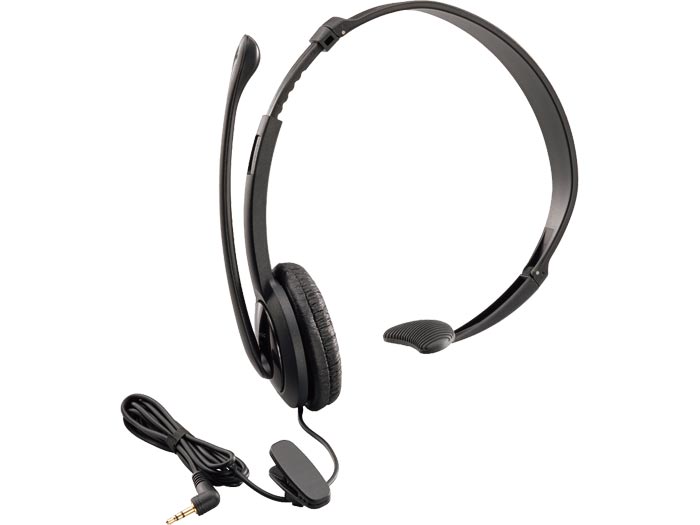I've had great feedback from my on air tests with local and DX stations. Compared to my Icom SM-20 desk mic people have said the homebrew mic has a more rounded audio, with additional bass and punchier top end. It seems to drive the radio well, average modulation is higher and people say they prefer the audio over the SM-20.
All this is remarkable given the SM-20 costs in the region of £150, and the Panasonic homebrew mic components came in under £15, needing only modest skills with a soldering iron.
Our first design made use of the 8v positive voltage on PIN 2 of the microphone connector, and included a 4.7 KΩ current limiting series resistor and a 47 μF electrolytic capacitor for DC blocking wired between PIN 1 and PIN 2.
Now all we needed to do was to hook up PIN 1 mic in and PIN 7 Mic ground through the jack socket to the headset and we were good to go. PIN 5 and PIN 6 are used for the push to talk switch (PTT) and go to a toggle switch on the box and also to a jack socket for a remote PTT (like a foot switch etc)
The Panasonic headset has a 2.5mm male jack supplying the output from the boom mic and the feed to the headphone speaker. As a temporary measure we've used a 3.5mm to 2.5mm converter plug to connect the headset to the small interface box.
We've hardwired a jack plug to fit into the radio's headphone socket as well, which gives the option of listening through the headset when plugged in, muting the speaker on the receiver.
This PIN Out table is for my IC-775DSP:
| Icom 8 Pin Mic Round connector | |
| Pin # | Function |
| 1 | Mic Audio |
| 2 | |
| 3 | |
| 4 | |
| 5 | PTT |
| 6 | PTT Ground |
| 7 | Mic Ground |
| 8 | |
4 connections needed in Blue
4 connections not usedin strikethrough
WARNING pin 2 on the mic input is +ive 8 volts
be careful, if shorted to earth it can damage your radio.
Parts list for Icom round 8 pin radios
1 X Small box
1 X 3.5 MM mono or stereo panel mount socket (for the external PTT if needed)
1 X 2.5 MM stereo panel mount socket (for the KX-TCA60)
1 X toggle switch (PTT)
1 X 8 pin mic plug
1 X 3.5 MM jack plug (to connect to headphone socket on radio) I cut a computer audio connect cable in half
1 X 6" 4 core cable to connect the box to the radio (only 4 cores connected)
1 X 6" hookup wire
My good friend Paddy (26AT127) helped with the testing, we have customized a version for him with a RJ45 connector to fit his IC-706 MKIIG to use when he is working from the mobile.
Paddy's HM103 Mic connections into his IC-706 MKIIG.
| CAT5 RJ-45 | ||
| Color (Cat5) | Pin # | Function |
Orange/White |
1 | |
| Orange | 2 | |
Green/White |
3 | |
Blue |
4 | PTT |
Blue/White |
5 | Mic Ground |
Green |
6 | Mic Input |
Brown/White |
7 | Ground |
Brown |
8 | |
4 connections needed in Blue
4 connections not usedin strikethrough
WARNING pin 1 on the mic input is +ive 8 volts
be careful, if shorted to earth it can damage your radio.
Parts list for Icom 8 pin RJ45 radios
1 X Small box
1 X 3.5 MM mono or stereo panel mount socket (for the external PTT if needed)
1 X 2.5 MM stereo panel mount socket (for the KX-TCA60)
1 X toggle switch (PTT)
1 X Cat 5 straight through patch cable to connect the box to the radio (I cut a patch cable in half)
1 X 3.5 MM jack plug (to connect to headphone socket on radio) I cut a computer audio connect cable in half
1 X 6" hookup wire







No comments:
Post a Comment